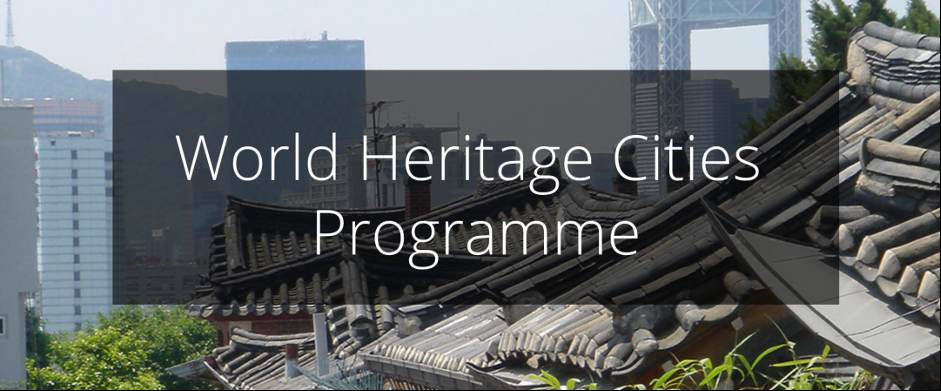| UNESCO celebrates the 10th Anniversary of HUL Recommendation |
| PublishDate:2021-06-18 Hits:2858 |
The UNESCO Recommendation on the Historic Urban Landscape (HUL Recommendation) celebrates its 10th anniversary this year. UNESCO, in collaboration with other partners, will host the HUL Anniversary launch celebrations, which will take place online from 16 to 24 June 2021. During the event, discussions addressing topics such as public space, renovations,tourism, infrastructure and livelihoods will be explored, and it will serve as a catalyst to discuss on ways forward of the HUL approach.
The World Heritage Cities Programme aims to assist States Parties in the challenges of protecting and managing their urban heritage. The programme is structured along a two-way process, with 1) the development of a theoretical framework for urban heritage conservation, and 2) the provision of technical assistance to States Parties for the implementation of new approaches and schemes.
Concerned by the multitude of World Heritage Cities facing difficulties in reconciling conservation and development, the World Heritage Committee at its 29th session in Durban, South Africa (July 2005) requested the development of a new standard-setting instrument to provide updated guidelines to better integrate urban heritage conservation into strategies of socio-economic development. The World Heritage Committee relegated this task to UNESCO in view of the fact that such challenges were faced by all historic cities, not only those inscribed onto the World Heritage List, to muster the broadest possible support from the international community, and to underline the role of UNESCO as standard-setting organization.
As part of this policy process that lasted 6 years UNESCO set up the Historic Urban Landscape initiative, an international working group comprising ICOMOS, IUCN and ICCROM (as Advisory Bodies to the 1972 World Heritage Convention) and other partner organizations, including UIA (International Union of Architects ), IFLA (International Federation of Landscape Architects ), IFHP (International Federation for Housing and Planning), OWHC (Organization of World Heritage Cities), the Aga Khan Trust for Culture, IAIA (International Association of Impact Assessment), the World Bank, UN-Habitat, UNEP (United Nations Environment Programme), OECD (Organisation for Economic Co-operation and Development), IDB (Inter-American Development Bank), ISoCaRP (International Society of City and Regional Planners), the J. Paul Getty Foundation and WMF (World Monuments Fund), as well as individual experts from different geo-cultural regions and professional backgrounds.
Expert meetings
From 2006 to 2010, eight international expert workshops were organized in Jerusalem (June 2006), UNESCO Headquarters in Paris (September 2006), Saint Petersburg, Russian Federation (January 2007), Olinda, Brazil (November 2007), Chandigarh, India (December 2007), UNESCO Headquarters in Paris (November 2008), Stone Town, Zanzibar (December 2009) and Rio de Janeiro, Brazil (December 2009). The meetings identified new threats and challenges to historic cities preservation that were not present when the last UNESCO Recommendation on this subject, i.e. the 1976 Recommendation concerning the Safeguarding and Contemporary Role of Historic Areas, was adopted and suggested inclusion of concepts that have emerged since 1976, such as those of cultural diversity, intangible heritage and the role and traditions of local communities, among others. Please click here to see the previous activities.
New Recommendations on the Historic Urban Landscape
On 10 November 2011 UNESCO’s General Conference adopted the new Recommendation on the Historic Urban Landscape by acclamation, the first such instrument on the historic environment issued by UNESCO in 35 years. The Recommendation on the Historic Urban Landscape will not replace existing doctrines or conservation approaches; rather, it is an additional tool to integrate policies and practices of conservation of the built environment into the wider goals of urban development in respect of the inherited values and traditions of different cultural contexts. This tool, which is a “soft-law” to be implemented by Member States on a voluntary basis.
In order to facilitate implementation, the UNESCO General Conference recommended that Member States take the appropriate steps to: · adapt this new instrument to their specific contexts; · disseminate it widely across their national territories; · facilitate implementation through formulation and adoption of supporting policies; and to · monitor its impact on the conservation and management of historic cities.
It further recommended that Member States and relevant local authorities identify within their specific contexts the critical steps to implement the Historic Urban Landscape approach, which may include the following: · To undertake comprehensive surveys and mapping of the city’s natural, cultural and human resources; · To reach consensus using participatory planning and stakeholder consultations on what values to protect for transmission to future generations and to determine the attributes that carry these values; · To assess vulnerability of these attributes to socio-economic stresses and impacts of climate change; · To integrate urban heritage values and their vulnerability status into a wider framework of city development, which shall provide indications of areas of heritage sensitivity that require careful attention to planning, design and implementation of development projects; · To prioritize actions for conservation and development; · To establish the appropriate partnerships and local management frameworks for each of the identified projects for conservation and development, as well as to develop mechanisms for the coordination of the various activities between different actors, both public and private.
The Recommendation on the Historic Urban Landscape was adopted on 10 November 2011 at the 36th session of the General Conference. The Recommendation on the Historic Urban Landscape, including a glossary of definitions can be found from http://portal.unesco.org/en/ev.php-URL_ID=48857&URL_DO=DO_TOPIC&URL_SECTION=201.html.
For more information, please visit: https://whc.unesco.org/en/cities/.
|
- News | WHITRAP Shanghai and CNR-ISPC bilateral meeting
- News | WHITRAP meets Cité de l’Architecture et du Patrimoine
- WHITRAP Hosting "Workshop on Preliminary Assessment for National Focal Points of the Asia Region" in Chengdu
- WHITRAP Shanghai meets UNESCO
- INTERNATIONAL CONFERENCE PRELIMINARY ANNOUNCEMENT & CALL FOR PAPERS
- Observation of the 46th Session of the World Heritage Committee
Copyright © 2009-2012 World Heritage Institute of Training and Research-Asia and Pacific (shanghai)



